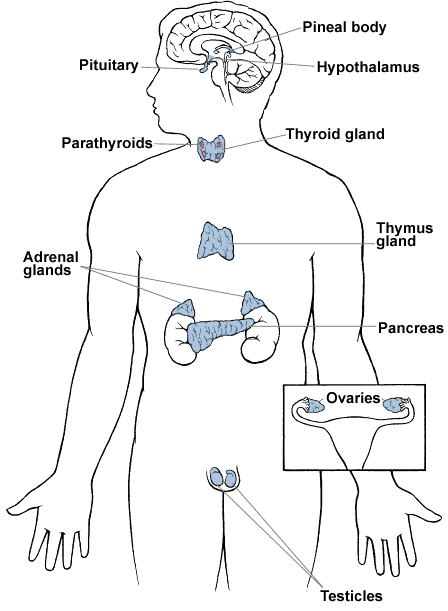Your endocrine system is a collection of glands that produce hormones that regulate your body's growth, metabolism, and sexual development and function. The hormones are released into the bloodstream and transported to tissues and organs throughout your body. The Table below the illustration describes the function of these glands.
![]()
![]()
| Adrenal glands | Divided into 2 regions; secrete hormones that influence the body'smetabolism, blood chemicals, and body characteristics, as well as influence the part of the nervous system that is involved in the response and defense against stress. |
| Hypothalamus | Activates and controls the part of the nervous system that controls involuntary body functions, the hormonal system, and many body functions, such as regulating sleep and stimulating appetite. |
| Ovaries and testicles | Secrete hormones that influence female and male characteristics, respectively. |
| Pancreas | Secretes a hormone (insulin) that controls the use of glucose by the body. |
| Parathyroid glands | Secrete a hormone that maintains the calcium level in the blood. |
| Pineal body | Involved with daily biological cycles. |
| Pituitary gland | Produces a number of different hormones that influence various other endocrine glands. |
| Thymus gland | Plays a role in the body's immune system. |
| Thyroid gland | Produces hormones that stimulate body heat production, bone growth, and the body's metabolism. |
 Organs
Organs
![]()
![]() Diseases
Diseases
- Addison's Disease
- Diabetes (see below)
- Hypoglycemia
- Insulin Resistance
